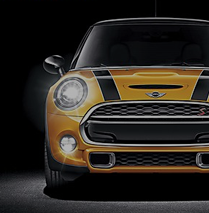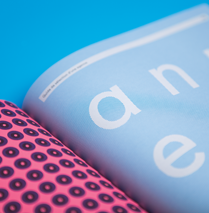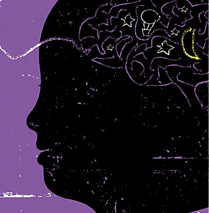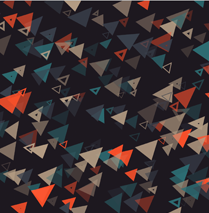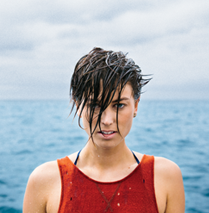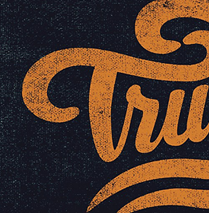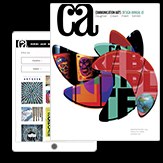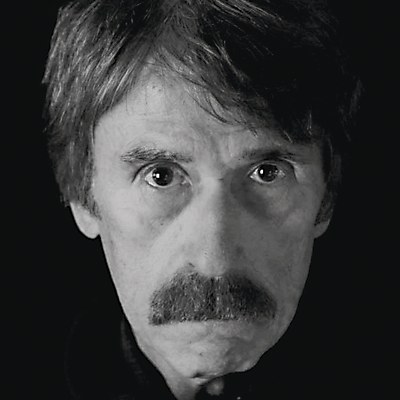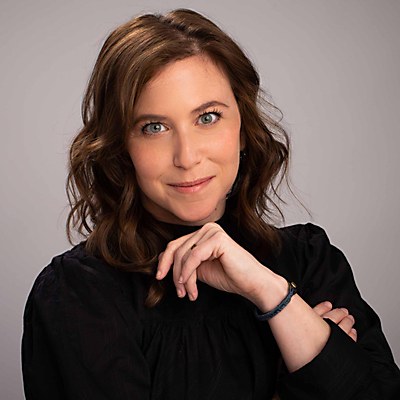How did you get started in photography and learn the skills necessary to your practice? I was raised in a halfway house for injured wildlife, my tertiary studies focused on animal science, and I spent twelve years working as a zookeeper specializing in carnivores and primates. My earliest letter to Santa went something like, “Dear Santa, please send me a book that shows every animal on the planet and where it lives.” I received Walt Disney’s Worlds of Nature and the Miracles of Nature by John Gilbert, the latter becoming my most-read childhood book.
I began photographing when I was eight years old, using my mother’s Kodak canister camera. When I was fifteen, my grandmother traveled to Hong Kong with my hard-earned, paper-route life savings of $250 and returned with a Cosina CT7 film camera, 50mm lens and a small flash. I had no formal training in photography, learning my craft through trial and error. I experimented with depth of field by photographing books in a bookcase and items around my home, recording the settings for different lenses. Like most teenagers, my subjects were my family, my friends and my surroundings. I had pictures published off my third roll of film, and the impact of seeing my work in print changed my life.
Following high school, I began a career as a zookeeper with the Royal Melbourne Zoo, caring for big cats, carnivores and primates. I would photograph hundreds of species at the zoo and learn the nuances of animal behavior. I completed several degrees in applied science and animal sciences during this period, and my first wildlife image was published on the cover of a scientific journal when I was nineteen.
The zoo began using my images for its guidebooks and would forward any inquiries received from publishers searching for specific images to me. If I didn’t have those species in my portfolio, I would go photograph them. Eventually, I decided to formalize my distribution platform and registered Bio-Images as a stock agency for companies to access my photographs. I spent half of my annual salary on a copyright lawyer to develop a robust contract to protect my rights. An element of that contract insisted the publisher print my name every time it used my image—this is how I broke into the market before the existence of the internet.
In time, Bio-Images became well known, and magazine publishers began contacting me to undertake assignments. The first assignment was always very small—several hours or half a day, if that was a successful day. Then, the assignments became multiple days long, and in time, multiple weeks. This is the only way to learn the skills necessary to work with clients and hone your field skills to a timeline and budget. The income I generated from Bio-Images and my career as a zookeeper funded my travel and equipment, as well as the expansion of my photography.
As a wildlife photographer, you primarily work for National Geographic. When did you start working for the media company, and what has this professional relationship been like for you? I made my first proposal to National Geographic magazine in 2001. In the years prior, I had photographed for and submitted images to major natural history publications both in Australia and internationally. I was also very active in the wildlife stock photography industry, providing content for all the major publishing houses in Australasia. I was patient in making my first submission to National Geographic because I needed to feel comfortable in my ability to work for such an esteemed publication—should I have been successful. This decision proved to be fortuitous because I was given the opportunity to expand on my initial proposal, shooting additional coverage from which my first images were selected for inclusion in the magazine.
My relationship with National Geographic has since been wonderful and humbling. It has provided me with an opportunity to explore the world, documenting not only wildlife and ecosystems, but also cultures and ancient civilizations. It has let me meet fascinating, gifted people and immerse myself in experiences and adventures. Working with National Geographic is an honor and a privilege, and I hope the content I create enhances people’s knowledge of the world. I will forever be grateful for the opportunities provided me by this association.
What equipment do you work with, and what do you like about it? How does it help you overcome the unique challenges working in wildlife photography? I’ve been a long-term proponent of Nikon for my field photography. I utilize a variety of lenses between 14mm and 800mm and a SEACAM underwater housing system with Inon strobes. I never leave home without my beaten and battered Hasselblad XpanII film camera for panoramic shooting—yes, I’m still shooting film! I love film and the joy of knowing my skill will determine the outcome of the image. The photographer you are when you shoot film is the photographer you are.
In my experience, Nikon is the most rugged of all the camera brands. Whether it’s -30° C (-22° F) or 47° C (117° F), or in torrential rain, snow, sleet, dust or storms, the lenses and bodies just keep going. I’m very hard on myself, and my camera equipment needs to be able to keep up with the work I do. I cannot be in a scenario where my kit breaks at the slightest impact of difficult climactic conditions.
Many photographers choose equipment for the way it looks or the way they perceive it makes them look. I have no interest in this at all. I love my equipment, but for me, it’s a tool to create imagery and tell stories for people who do not have opportunity to visit these locations. The camera equipment I use is responsible for translating those unique experiences to the world. It must be able to withstand the rigors of my life as a field photographer.
Tell us about your book Icebergs to Iguanas. What inspired you to put this book together, and what was it like revisiting some of your work and discussing behind-the-scenes content? My collection of imagery in the National Geographic archives is substantial. For many years, my editors and I discussed creating a series that examined my diverse portfolio. Without referring to my archive, I created a list of stories from my career that meant the most to me personally and not how they were perceived in the public domain. After countless frames and unmapped miles, the result was Icebergs to Iguanas, which features a collection of my favorite National Geographic images, behind-the-scenes tales and personal observations extracted from my field journals. An additional two volumes are planned in the series.
Photography is more than just capturing beautiful pictures; it’s about telling a story. My goal is to take people on a journey filled with beauty, adventure, hardship and danger, disease, laughter, and wonder, and to inspire people about the natural world in which we live while simultaneously celebrating our diverse cultures. Icebergs to Iguanas is a bespoke book, a cacophony of composition, color and contrast. It will be available in the US and Canada in April 2024.
Since your work has taken you to every continent and every environment imaginable, what have been some of your favorite subjects to cover, and where have been some of your favorite locations to shoot? I’ve always believed that photographers should evolve as they adapt to new circumstances, creating content that challenges them creatively and contributing to photography as an art form. I’m very fortunate that my career has let me undertake assignments with such a breadth of subject matter and location. The resultant adventures have often consumed by body in disease and injury as I’ve migrated through a vast array of ecosystems—including those that humanity has created.
For many years, I was regarded as a wildlife photographer, often spending months on assignment only to return without a single image of a person. However, as my career evolved and I aged, how I wanted to tell stories changed. I found myself also documenting the human condition. I now regard myself as a photographer of natural history of which humanity forms a part of the global ecosystem.
Assignments that feature wildlife and ecosystems are still my favorite. I’m able to immerse myself in the natural world, where concerns that might arise have become a greater passion than I could have imagined in my youth. When I reflect on my career, it’s my ongoing projects in the Serengeti, the Amazon and Antarctica that never cease to give me great joy. These ongoing projects have been undertaken over many decades.
I’m proud of my endeavors to document and raise awareness of endangered species, and that resultant coverage generated significant funding to support research. I am also proud of my ability to dissolve cultural barriers where miscommunication and perceptions create divides.
What is the weirdest thing that has ever happened on a shoot, and how did you handle it? I’ve been bitten, clawed, chased, chewed, shot at, stoned (with rocks), defecated and urinated on, smuggled, groomed, diseased, lost, injured, incarcerated, frightened, and enamored. I don’t count the countries I’ve visited, so it’s difficult to know whether I’ve captured more frames than I’ve traveled miles. The insect larvae living behind my eyeball resulted in prolonged—thankfully not permanent—blindness, and a nine-month microscopic tick infestation was equally as inconvenient. Losing twelve months of my memory to a prolonged fever was problematic, but you learn to forget a year and move on.
Illness and injury have been such a part of my career that I fail to recall them all. My work has often turned my body into a cesspool of disease and pain. Over the decades, I’ve had countless bouts of food poisoning, giardia and dysentery, which I often refer to as my best friends because we’ve traveled so often together. Brain-damaging fevers, parasitic infestations, fungal colonies and insect larvae have all called my body home, as have more malevolent manifestations such as swine flu, MERS, brucellosis, leptospirosis, malaria—the list continues. I’m a walking, talking petri dish.
Prolapsed cervical discs, broken and crushed digits and ribs, a shattered clavicle, dislocated shoulder—by the way, popping it back in hurts considerably more than depicted in Hollywood movies—dozens of cranial sutures, ligaments torn from bones, a rotator cuff peeled in half, knee and shoulder reconstructions, cracked tibias, and torn bicep tendons. The leopard cat that bit through my thumb and the Sumatran tiger that plunged a dewclaw between my ribs were enough to make me wince!
Travel is simply wonderful, but when things go awry, there’s a certain psychology required to survive. You’re isolated even if you have a companion. For much of my career I’ve journeyed alone for months at a time. I must be comfortable in my own company and with managing my health and wellbeing. I’m not always able to call home or phone a friend, seek medical attention, or, at times, even find food and water. There is a high probability I cannot speak the local language. People can and do die in these circumstances not just in the wilderness, but also in cities and towns. When you’re working on assignment, there are no excuses—only images.
What do you think of the photography industry at the moment, and where do you see it headed? There is a plethora of articles contaminating the media about the future of photography and photographers. If I were to read this content, my wine consumption would increase dramatically, and I’d be dissuaded from following my passion.
Much of what is being discussed is valid and incredibly important to the future survival of photography as an art form and a viable industry. However, I’m also aware that the narrative is very negative, and this impacts my ability to create the imagery that gives me joy. I have witnessed many of these changes before: new technologies not always in photographers’ best interests, budget slashing and an entrenched lack of understanding as to what it takes to be a professional photographer. Gifting photographs for an image credit and charging rates so low as to undercut competitors undermine the financial stability of our industry. If your client is making money, you should be making money.
The behavior of many photographers has allowed the industry to be dissected and looted to the point where many creatives struggle to make a living. I am extremely concerned about the ethics—or lack thereof—exhibited by photographers attempting to achieve short-term fame in the social media landscape.
However, I’m starting to see ripples emerging in the industry that indicate people are fighting back, and sometimes larger industry forces are taking note. I would like to think this would accelerate encouraging respect and support for creatives. For this to happen, photographers need to hold themselves, institutions and parties that use their imagery to account, ensuring that they are appropriately recognized and remunerated.
Photographers must first respect their work and drive how we want people to perceive our product and its value. In many ways, the impacts of AI place an additional burden on all creatives. However, there is also an opportunity for our industry to lobby governments to insist images placed in the public domain are required to disclose how they were created.
Do you have any advice for people just entering the profession? Get excited! Be brave! Enjoy the freedoms a creative life can present you.
If you want to succeed as a photographer, you will need to sacrifice all your time and financial resources to the task. Traveling with your partner and shooting a little in the morning and afternoon is neither an assignment nor a personal project—it’s a holiday. Photography is often a very personalized, selfish pastime, and it demands nothing less than your undivided attention.
I believe there are enormous opportunities for people engaging in a photographic career. The most important element people need to consider is to stay true to their creative vision. It is far too easy to get sidetracked by social media, the latest trends and post-production fads. Focus on creating your distinct voice. Avoid imitating other photographers in the hope that their success will become yours. When I began at National Geographic, my editors said the number one mistake people made was copying other photographers’ work, as that will never get you in the door. They already have that person; they need to see new, innovative imagery.
Don’t be afraid to experiment with your photography both in style and subject matter. Every frame does make you better, and the more you can photograph in different circumstances, the more employable you’ll be. Many people can photograph in perfect studio lighting; however, very few are so adaptive that they can work in every weather condition and produce imagery a client will be able to use. It’s crucial that you become extremely familiar with your equipment, how it performs in different circumstances and what you can produce with the items you have. ca


